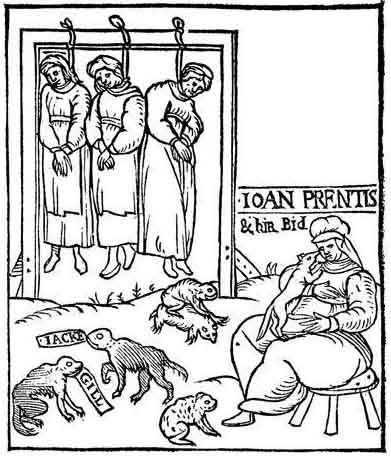Joan Cunny (c. 1508/1509 – 1589) of Stisted, Essex, also known as Joan Cony, was one of the thirty women and one man known collectively as the Essex witchesCollective name given to the 31 people accused of witchcraft in the English county of Essex between 1566 and 1589., who were prosecuted for witchcraft in Essex between 1566 and 1589 under the Witchcraft Act of 1563Series of Acts passed by the Parliaments of England and Scotland making witchcraft a secular offence punishable by death..[1]
Joan was one of three women whose cases were published in 1589 in a pamphlet titled The Apprehension and Confession of Three Notorious Witches; the other two were Joan Upney and Joan Prentice, who may have been Joan Cunny’s mother.[2] Joan Cunny was accused of harming and killing her neighbours and causing a damaging storm,[1] accusations that were supported by her two illegitimate sons, the eldest of whom was 10 or 12; one of the boys also gave evidence against his grandmother, Joan Prentice.[2]
In her confession Joan Cunny claimed to have learned her “art” from Mother Humphrey of Maplestead,[a]Also known as Mother Dumfrye.[3] who had taught her to summon spirits by making a circle on the ground and praying to Satan.[4] In return Joan had promised her soul to the spirits, which she took home and fed, and who performed various malevolent acts at her bidding.[1] Joan called her familiarsDemonic spirit who attends upon a witch, possessing magical powers that can be used for good or evil. Often taking the form of a small animal such as a cat. Jack and Jill; they were described as being like black dogs in appearance but “faced like a toad”.[5][6]
Joan Cunny was hanged at Chelmsford on 5 July 1589.[1]

